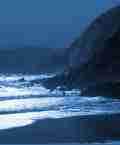 |
Search the site:

 [from the Appletree Press title John McNally - Boxing's Forgotten Hero published by Appletree Press]
[from the Appletree Press title John McNally - Boxing's Forgotten Hero published by Appletree Press]
BOXING AS A WAY OF LIFEIn 1947, John again won the Ulster juvenile crown, this time at 6 stone, but a trip to Dublin for the all-Ireland series was not something that gained the approval of the Brothers at Hardinge Street. Brother McGuinness ruled the roost in the school, and when he heard that John was not concentrating on studying for his examinations, he decided to put a stop to it. One morning in February, McGuinness called John into his office to discuss his boxing career. John’s leaving examinations were the main priority for the Christian Brother; when he discovered that his pupil had fought the previous evening, he forbade him to box until after he left school. Father McAlea, the chaplain of the St Mary’s club, tried to intercede on John’s behalf, but it was to no avail as McGuinness was adamant in his decision. Despite this setback, John continued to train and fight in non-championship bouts, against the ruling of Brother McGuinness. John’s fitness was something that marked him out and gave him the added edge over opponents.One of the most forward-looking clubs in Belfast in the 1940s was the White City club, based in York Street. Under trainer Sammy Wallace the club was setting the highest standards and John McNally was naturally impressed. One evening, in the ring with an up-and-coming star of the White City called Arthur McGill, John was caught by one of the sweetest left hooks he ever had the privilege to receive. That bout led John to believe that he would better himself at the White City where pugilists such as Tom Walsh were setting the standards in Irish boxing. Sammy Wallace was to become the greatest influence on John McNally’s career. Once he had made the decision to leave St Mary’s, it was natural that he would form a winning alliance with Wallace. Although the White City trainer had no pedigree in the boxing ring, he had a devotion to game and had picked up some valuable experience in the United States. His methods and knowledge were far in advance of anything in Belfast at that time, and he soon worked on perfecting any flaws in McNally’s style. “Sammy was a coach and not a trainer, and there is a very subtle difference,” recalled John. “I first met him in Dublin at a tournament and he impressed me the way he handled his boxers and how they performed. In many ways, he was too nice a man to be in the boxing game, but the way he taught me was second-to-none. He was a master of the art of ring craft and how to ghost and move. He taught me how to punch hard and move fast, how to use the ropes and slide. Technically, there was nobody in Ireland at that time who could touch him. My game improved immensely and it was in 1947 that I began to believe that I could make it to the top in the amateur game.” In 1948, John McNally left the Christian Brothers’ to take up an apprenticeship as a mechanic at the Belfast firm Isaac Agnew. In that year a great sporting event whetted McNally’s appetite for competitive sport at the highest level. London, which had been due to host the 1944 Olympic Games, was the venue for the XIV Olympiad. Those Games were the first to receive mass media coverage, and athletes representing 60 nations took part. The Olympics were a triumph for Britain, as London was still recovering from the devastations of the war. Wembley Stadium was fitted with a temporary running track, and was used as the main athletics stadium. The major star of the Games was the Dutch runner Fanny Blankers-Koen, who won gold in four events and became an instant hero. The carnival of sport was carried in every cinema, newspaper and radio station. For a fifteen-year-old fledgling boxer in Belfast’s Cinnamond Street, the Olympic Games were now the ultimate sporting dream to which he could aspire. With John McNally now based at the White City club, the Olympic Games held in London in 1948 would set in motion a train of events that would eventually see him travel to the XV Olympic Games in Helsinki in 1952. Read the opening part of this Chapter : here Read the previous Chapter : here
From the Appletree Press title: John McNally - Boxing's Forgotten Hero by Barry Flynn. |
[ Back to Top ]
All Material © 1999-2009 Irelandseye.com and contributors
